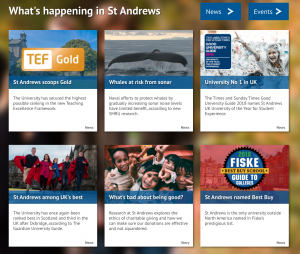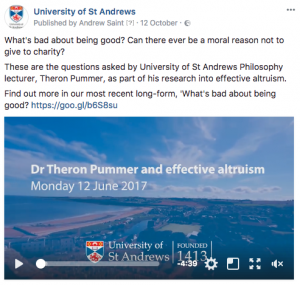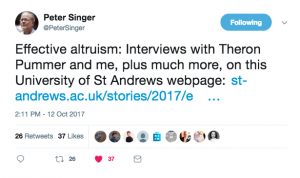How we promote our long-form stories
Are you familiar with the Stories section on the University website? The digital communications team have been creating long-forms since 2015 with the purpose of showcasing the University’s research, history and student experience. Stories from 2017 have included Breaking bonds and What’s bad about being good?
Featuring in a long-form is an excellent opportunity to raise awareness of your story to a wider audience and get prominent coverage on the University website and social media channels. Part of every long-form strategy is to build a communications plan to ensure that we share your story with as many people as possible.
So how do we promote a long-form?
1. Create the communications plan
When a long-form is ready to share, we take time to create a communications plan. This involves deciding when the long-form will be published, what key points from the story will be promoted and what social media channels we will use to share it on.
Every Monday morning, team members from across corporate communications have a planning meeting to discuss the week ahead. If a long-form is being released, then it will also be decided how the long-form plan fits into the bigger University communications plan.
2. Promotion on the website
Once a long-form is published online it receives a prominent position on the University homepage. The homepage is the first page many of our users view and promoting the story in the ‘What’s happening in St Andrews’ section increases the chances of it being clicked on. The tile remains on the homepage for several weeks, meaning that thousands of users will potentially see your story.
3. Social media
The University currently has over 77,000 social media followers and is one of our biggest platforms for communicating with people both inside and outside the University.
Part of the communication plan includes a social media schedule which details when and where the long-form will be shared on social media. The main channels we use are Facebook and Twitter; however, if there is a justified case we will also look at sharing on Instagram and other channels too.
Facebook and Twitter allow us to share the videos and images which generally feature in a story. Typically, we will divide a long-form into smaller topics and promote each section separately on Facebook and Twitter across the week. It makes the long-form easier for the audience to digest and keeps posts short but engaging. It also means that, unlike a news release, which might get one post, a long-form will get shared multiple times throughout the week, increasing the audience that it is reaching.
We also use social media to engage with influential profiles who have an interest in the story. We encourage people who feature in the long-form to share the story on their personal social media channels as this also increases the chances of it being picked up by influencers. For example, the effective altruism story was Tweeted by leading philosopher Peter Singer who has over 82,000 followers.
4. Internal communications
As well as using social media we also promote the long-form via internal communications. ‘In the Loop’ is a weekly newsletter which is sent to all University staff each Friday. A link to the latest long-form story will feature in ‘In the Loop’ after it is published, meaning that all staff will have the opportunity to read your story.
5. Repurposing content
Long-forms are designed to be evergreen content. This means that the information will still be relevant to the reader in one month, six months or even a year’s time. For this reason, we try not to date the story with information which has a short time span. This also allows us to potentially share the long-form multiple times throughout the year when it has relevance to the University. For example, St Andrews to Zambia was shared almost a year after publication after Clement Mubanga Chileshe, who is involved in the project, received an honorary degree from the University in June 2017.
After each communication plan has concluded we will look at the analytics available to us to review what went well and what could be improved. This helps us to better future communication plans and ensure that we are always doing the best we can to get your story out to as many people as possible.
If you are interested in being the feature of a long-form story in 2018, please get in touch with the digital communications team.


